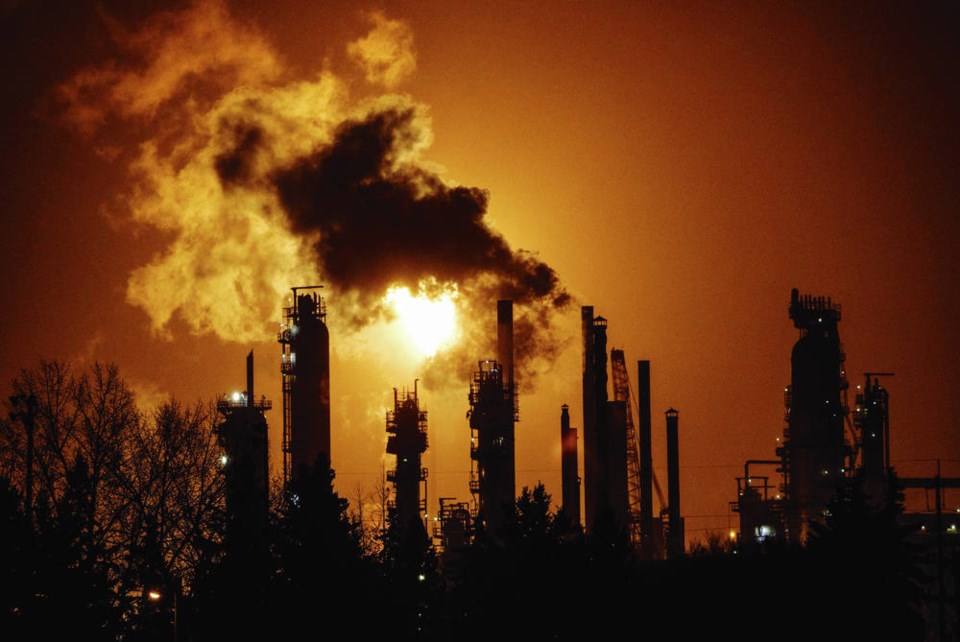Readers of this paper were recently treated to a classic piece of “light your hair on fire” misinformation inspired by the fossil-fuel industry. In a July 31 column, Gwyn Morgan informed us that achieving net-zero greenhouse-gas emissions by 2050 “would require phasing out fossil fuels that currently supply 84 per cent of global energy,” that the G7 plan to achieve net zero “defies the laws of physics” and that “it’s clear that ‘net zero’ is simply not on.”
If achieving net-zero emissions by 2050 defies the laws of physics and is simply not on, that must be news to the International Energy Agency, hardly a hotbed of wild-eyed radicals. In May, the IEA released its Net Zero by 2050 report, subtitled “A Roadmap for the Global Energy Sector.” The report notes that 50 countries, representing 70 per cent of global emissions, and including China and the U.S., have committed to net zero by 2050.
It must also be news to the European Commission, which adopted a set of measures on July 14 that will reduce net greenhouse gas emissions by at least 55% by 2030, compared with 1990 levels, on the way to making Europe the world’s first climate-neutral continent by 2050. But let’s be clear what net zero really means.
First, it does not mean no greenhouse-gas emissions or no fossil-fuel use. In the Paris Agreement on climate change, countries agreed to “achieve a balance between anthropogenic [human-created] emissions by sources and removals by sinks of greenhouse gases in the second half of the century.” Net zero means that overall, there would be no net increase in the level of GHGs in the atmosphere.
To achieve net zero, we have to either reduce our emissions or find ways by which the Earth can absorb more GHGs through its carbon sinks. In practice, we need to do both, although emissions reduction has received most of the attention so far. Next week, I will dig further into the potential to expand carbon sinks.
Clearly, the IEA believes achieving net zero, while very challenging, is doable. Their report states: “In the net zero pathway, global energy demand in 2050 is around 8% smaller than today, but it serves an economy more than twice as big and a population with 2 billion more people.” Moreover, “the energy sector is based largely on renewable energy,” with “two-thirds of total energy supply from wind, solar, bioenergy, geothermal and hydro energy.”
This would not mean phasing out fossil fuels, although they would be dramatically reduced. While noting there would be “a huge decline in the use of fossil fuels,” the IEA reported that compared with the “four-fifths of total energy supply today,” fossil fuel’s contribution would fall to “slightly over one-fifth by 2050.”
It would mainly be used “in sectors where low-emissions technology options are scarce,” as well as in facilities using carbon-capture technology and in creating plastics.
Of course, what troubles Morgan and other fossil-fuel advocates is the IEA’s avowal that “there is no need for investment in new fossil-fuel supply in our net zero pathway.”
The IEA foresees coal demand declining “by 98 per cent to just less than 1% of total energy use in 2050,” while “gas demand declines by 55 per cent … and oil declines by 75 per cent”.
Nobody is suggesting this will be easy. Recognizing that “not all technologies are available on the market today,” the IEA calls for “an unprecedented clean technology push to 2030.”
The IEA suggests this requires a doubling of annual energy-sector investment by 2030, but notes that by 2050, average annual energy investment takes only one per cent more of GDP than in recent years.
Moreover, this pathway means “universal access to sustainable energy is achieved by 2030” and the creation of 30 million jobs, compared to losses of about five million jobs in the fossil-fuel sector. This must be handled with care, ensuring a just transition for these workers.
The pathway to net zero is tough, but doable, and brings many social, economic, ecological and health co-benefits, as the IEA and European Commission reports make clear. It is the denial of net zero that is simply not on.
Dr. Trevor Hancock is a retired professor and senior scholar at the University of Victoria’s School of Public Health and Social Policy.
- - -
To comment on this article, write a letter to the editor: [email protected]



